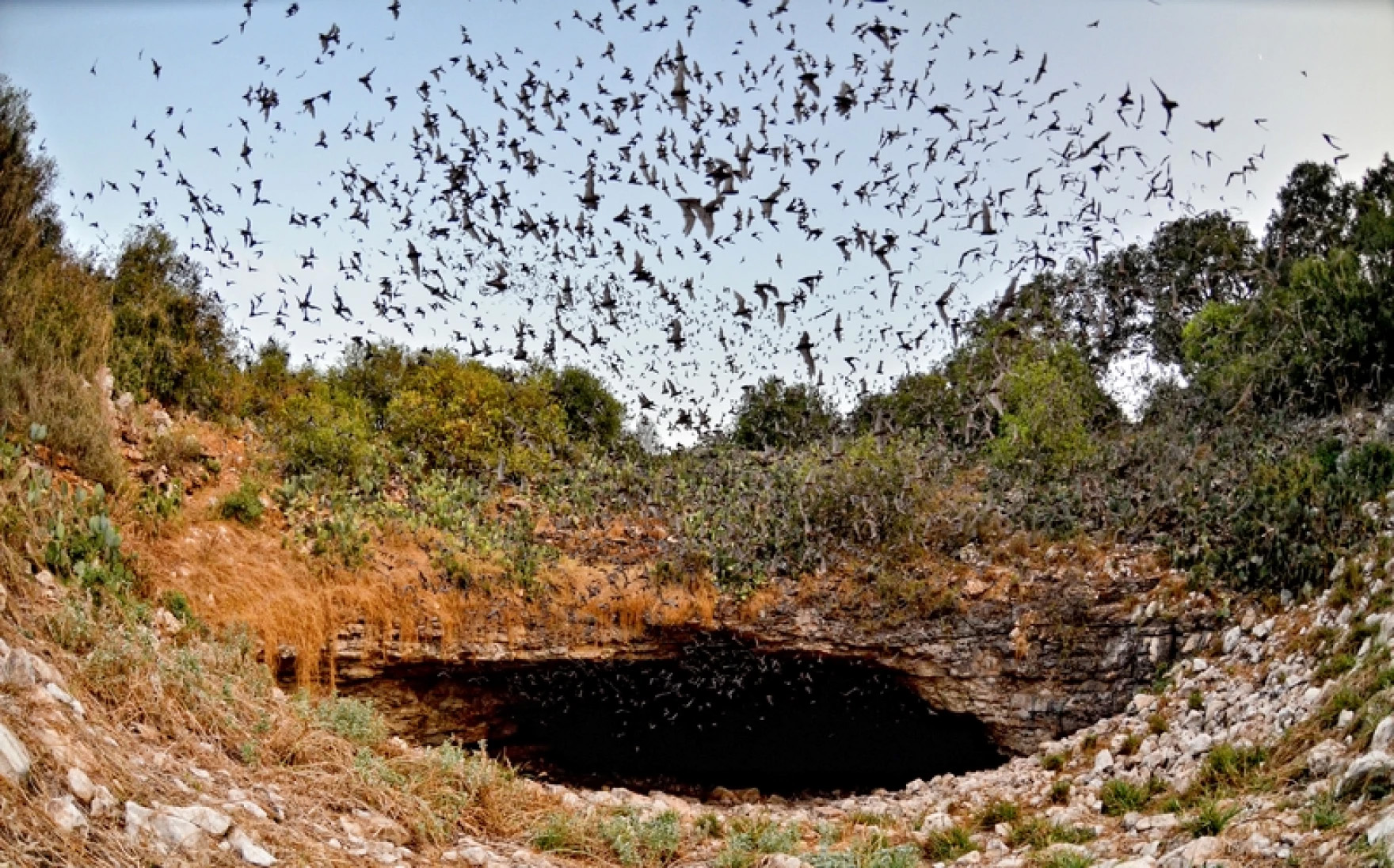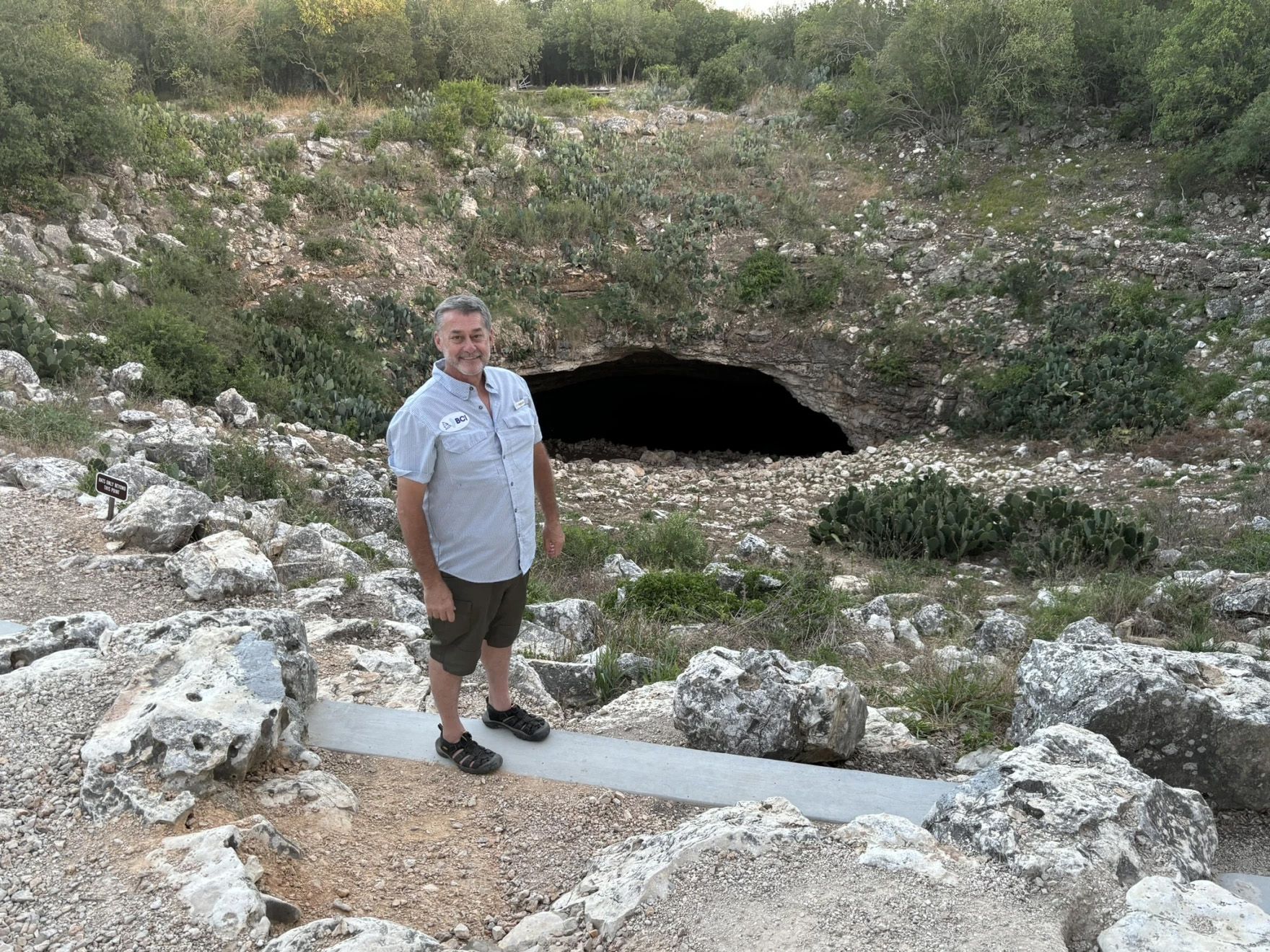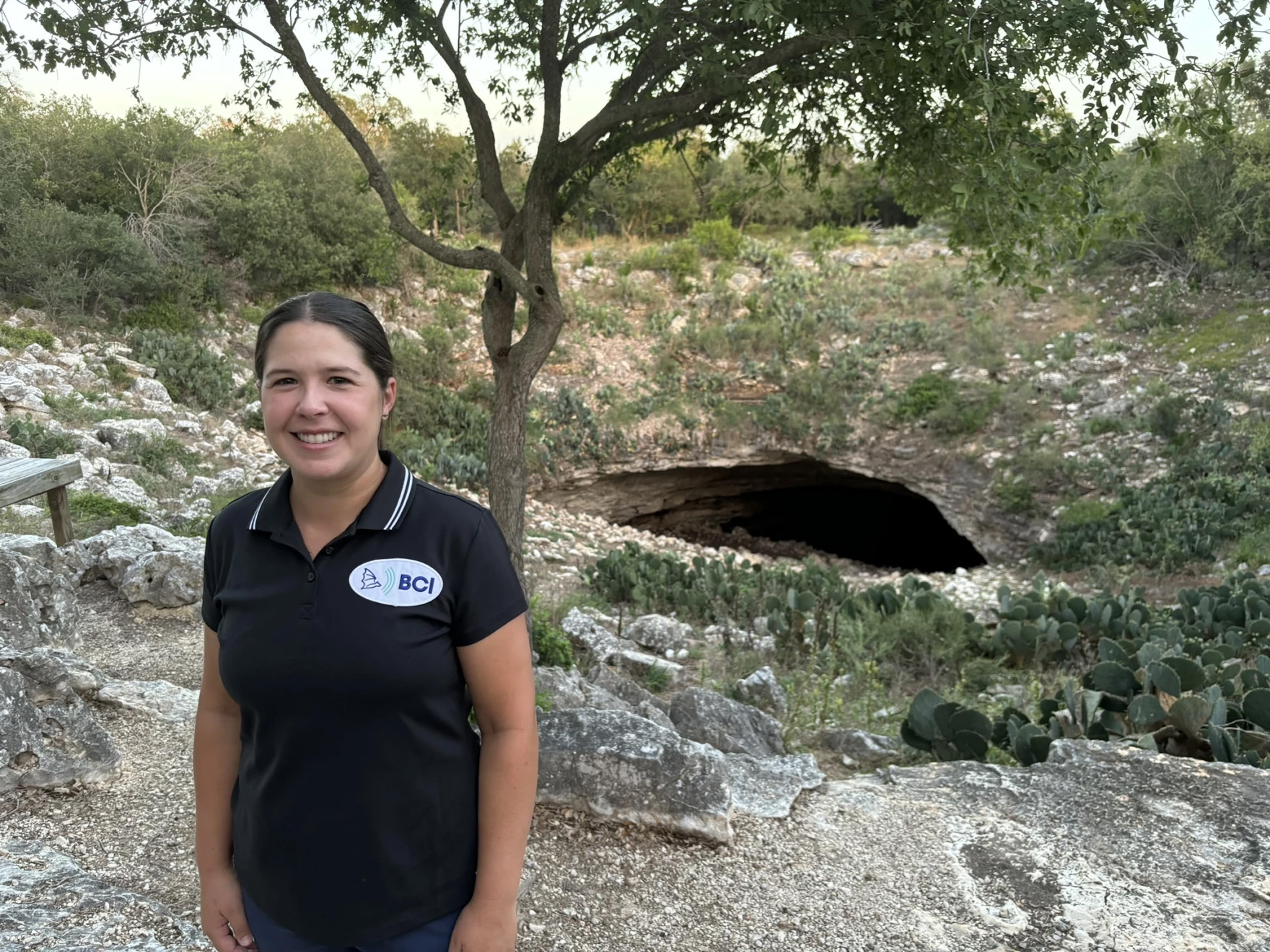From Texas Public Radio:
When newly hired meteorologists get to San Antonio, the first thing they have to learn is that the heavy showers they see forming on radar northeast of the city every summer evening have nothing to do with rain.
That’s because radar isn’t picking up rainfall. It’s picking up bats taking flight. Bat Conservation International’s Fran Hutchins said there are so many, if you’re close by, you can even hear them.
“We call it a batnado. It’s so intense,” he said.



















